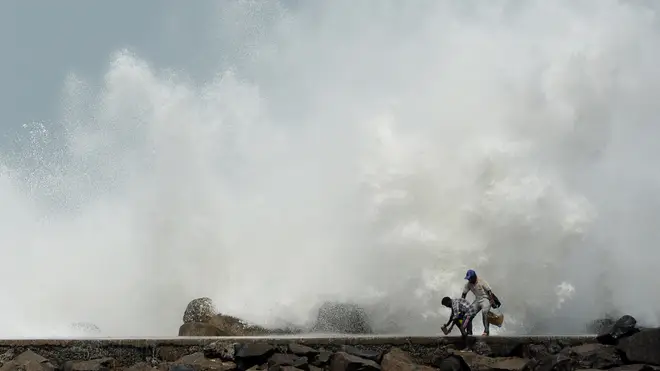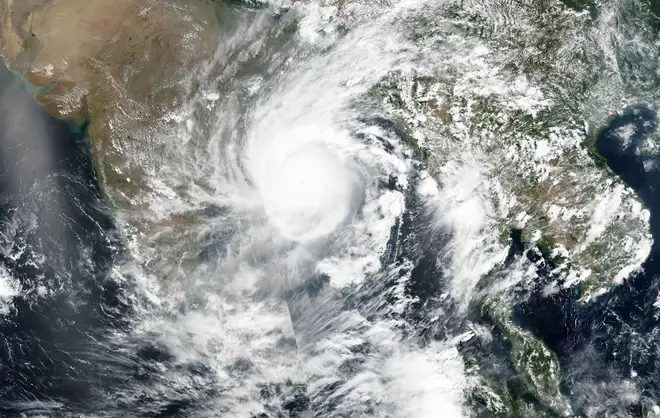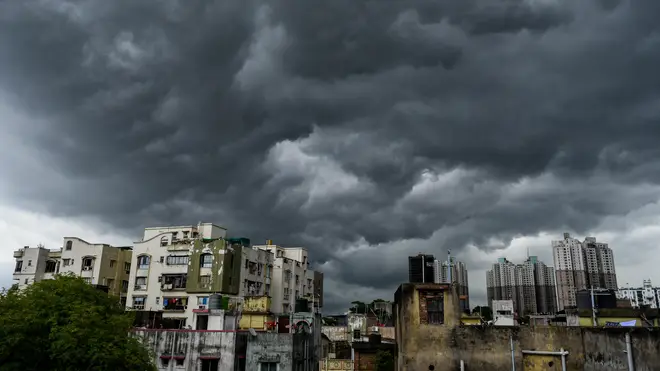
Clive Bull 1am - 4am
20 May 2020, 15:34

More than 2.6 million people have been forced to flee from their homes as Cyclone Amphan batters India and Bangladesh.
The powerful storm, which is the equivalent of a category-3 hurricane and one of the fiercest to hit the region in decades, has whipped up winds up to 105mph, with gusts reaching as high as 118mph.
Officials have warned that Cyclone Amphan could cause substantial damage to flimsy houses and seawater could be pushed as far as 15 miles inland in a storm surge.
There are fears the storm could flood cities, including former capital Kolkata in West Bengal, which has a population of almost 15 million people.
Efforts to evacuate people from vulnerable areas are under way, despite challenges brought on by the coronavirus pandemic.
One person is already said to have died as a result of the cyclone, according to New Delhi TV.
A Bangladesh Red Crescent volunteer reportedly drowned when a boat capsized as the group were trying to evacuate villagers.
Kolkata right now #CycloneAmphan #Kolkata pic.twitter.com/a2b3E03F06
— Arpita 🇮🇳 (@arpita_dg) May 20, 2020
#CycloneAmphan in Bengal 😞 2020 remains a dark year. pic.twitter.com/JjI8TotJF8
— The Thinking Hat 🇮🇳 (@ThinkinHashtag) May 19, 2020
Bangladesh is currently moving 2.2 million people to safety, while India's West Bengal state has moved nearly 300,000 and Odisha state another 148,486.
Authorities have had to move people to "crowded communal shelters" where they are at risk of catching or spreading Covid-19.
Face coverings and hand sanitisers have been added to the list of emergency items that are given to evacuees. However, Sobrato Das, a fisherman from Mousuni Island in India, said: "Very few people are wearing masks."
He explained how children were crying and women were desperately trying to cover their faces with their saris while trying to maintain distance from each other.
"I have left all my belongings in my house and hope it doesn't get washed away in the floods," he said.

The densely populated regions most at risk are home to some of South Asia's poorest and most vulnerable communities.
These include fisherman in the Sundarbans - one of the largest mangrove forests in the world - and more than a million Rohingya refugees living in the crowded camps in Cox's Bazar, Bangladesh.
The cyclone first made landfall between Digha, a seaside resort in West Bengal, and Hatiya Islands in Bangladesh.
Amphan's eye is predicted to pass through the Sundarbans, according to India's meteorological department.
It is hoped the forests along the coast could act as an important line of defence by breaking up the energy from the waves that would otherwise smash into the coastline, the department's former chief KJ Ramesh said.
#CycloneAmphan
— Roy🇮🇳 (@uugly_naked_guy) May 20, 2020
We're gargantuan. we can beat this one too. Odisha fookin invincible since 1999. stay unite, stay strong💓. Make sure ur pets and animals are safe.
Jay jagannath 🙏 pic.twitter.com/NRuO5wgdg7
A volunteer shared this from Patharpratima island in South 24 Parganas as #CycloneAmphan batters along coastal Odisha and into the #Sundarban delta of W Bengal. @Rudramahapatra and his team on standby for post cyclone assessment and #EmergencyRelief pic.twitter.com/XGYUTmXCAW
— Wildlife Trust India (@wti_org_india) May 20, 2020
In Cox's Bazar, where the first 10 coronavirus cases were confirmed last week, authorities and UN workers prepared 50 shelters and assigned 256 volunteer units, while areas at risk of landslides were stabilised with bamboo and concrete walls.
However, the combination of the virus and cyclone could lead to a "new humanitarian crisis," said Manuel Pereira, deputy chief of mission for the International Organisation for Migration in Bangladesh.
"We know that if people are forced to seek communal shelter, they'll be unable to maintain physical distancing and run the risk of contracting or transmitting the virus," said Mr Pereira.
Some cyclone shelters in West Bengal were being used for quarantining Covid-19 patients and migrant workers returning to their homes.
However, the state government asked for trains transporting migrants to be suspended, chief minister Mamata Banerjee said. Some schools were even turned into shelters.

Some of those caught in the cyclone's path described how they face a choice between the virus and the storm.
In the seaside resort of Digha, many people feared going to the shelters, said fisherman Debasis Shyamal.
"They have been home for weeks, and are afraid of going into a crowd where they could get infected," he said.
The densely populated city of Kolkata, which has nearly 1,500 coronavirus cases, is likely to see flooding, while some centuries-old buildings in the northern half of the city could collapse due to the strong winds, officials warned.
Cyclone Amphan is also bearing down during the Islamic holy month of Ramadan, with some Bangladeshis who fasted during the day reportedly waiting until the early hours of the morning before heading for the shelters.